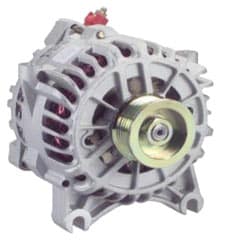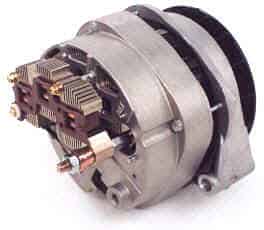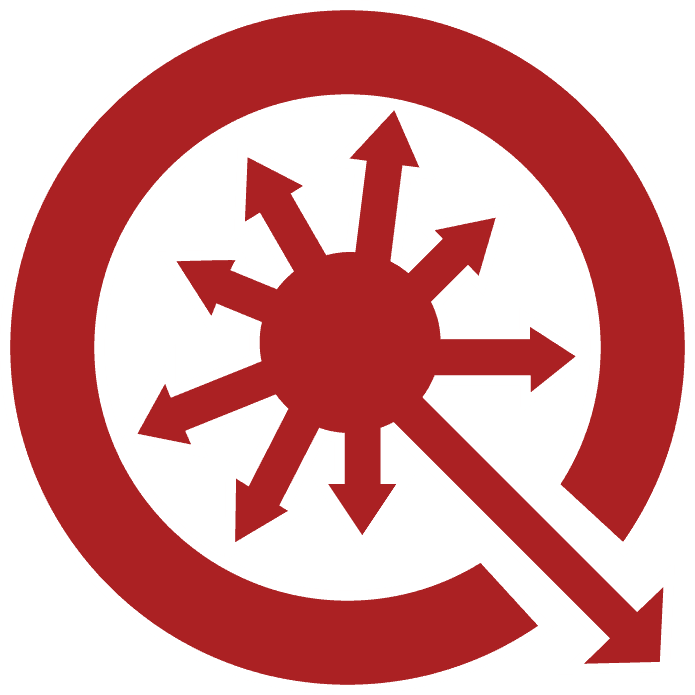Helpful guide on keeping your engine running strong
 Over the last several years we have published a variety of Tech Tips on marine and industrial alternators. One of these Tech Tips, Tech Tip #28 “Selecting and Installing A High Output Alternator“, focuses on choosing an alternator and the merits of our basic 105 amp internally regulated Delco unit. Another, Tech Tip #42 “Installing a New Balmar Alternator on your Gas or Diesel Powered Marine Engine” focuses on Balmar alternators. One of our Tech Tips, #45 “Alternators, Batteries, Regulators, and Solar Panels, Revisited” was originally published on the Cruising World web site and looks at some of the cost/benefits of alternative energy sources and compares these with simply upgrading your existing alternator.
Over the last several years we have published a variety of Tech Tips on marine and industrial alternators. One of these Tech Tips, Tech Tip #28 “Selecting and Installing A High Output Alternator“, focuses on choosing an alternator and the merits of our basic 105 amp internally regulated Delco unit. Another, Tech Tip #42 “Installing a New Balmar Alternator on your Gas or Diesel Powered Marine Engine” focuses on Balmar alternators. One of our Tech Tips, #45 “Alternators, Batteries, Regulators, and Solar Panels, Revisited” was originally published on the Cruising World web site and looks at some of the cost/benefits of alternative energy sources and compares these with simply upgrading your existing alternator.
This Tech Tip is different. It is more nuts, belts and bolts oriented. While our reference point is alternator maintenance on a Perkins diesel, our comments will apply to most engines.
- Routine Maintenance. The first step is to choose the right belt. Sometimes less is more. A lot of people prefer to use the “Green Stripe” Dayco belt. We think that this belt is not a good choice. Sure it is a heavy duty industrial belt but it is too stiff to wind easily around the alternator pulley. Additionally, it does not grip well. As a result of being too stiff and having a poor grip, people over tighten it and this tends to burn out the bearings in the alternator. We strongly urge you to stay with an OEM belt (we stock most Perkins diesel and Deutz diesel belts) or a Dayco Blue Stripe. Keep the alternator clean. Check the front of the engine for telltale alternator belt dust, keep the case clean and the air vent holes open. Heat kills alternators. People now even sell cooling fin kits, which we discuss below. Check your pulleys for alignment by looking along the drive belt to ensure that your alternator, water pump pulley, and crankshaft pulley are in alignment. Check the pulleys for nicks or gouges. Keep the number of pulleys to a minimum. You don’t really need a dual pulley set up for an alternator under 100 amps. If you need extra pulleys to run a larger than stock alternator for refrigeration or a raw water wash down pump we can supply them for most Perkins engines.
- Increase Longevity. You can decrease the flow of electrical current through your alternator bearings if you install a separate ground wire from the alternator case to the negative battery bus. Use the same size wire as the positive wire. Dr Diesel thinks that 4 AWG is the minimum to be used. If your Perkins or Deutz alternator is buried in a poorly vented engine compartment on a small boat or a concrete saw, or the back of the case doesn’t have cooling fins, install a flexible clothes dryer duct to run cool air in from outside. Use a small, brushless 12 bolt fan, wired to the alternator output terminal with an in line fuse to direct the air.
- Rebuilding alternators. Sure, there are magazine articles out there showing you how to rebuild your old 36 amp alternator on your wife’s new granite counter tops or on the marina dock between tides. We don’t think that this is a good idea for several reasons. The most obvious reason is that an alternator is a complex part and will require special tools (e.g., a specific size allen wrench that varies among alternators, a multimeter, etc.), some skill, and lots of running around for replacement brushes, the rotor, and maybe some diodes. These electrical parts are less and less available as the automotive industry moves off shore and North American suppliers dry up.
 When all is said and done you will have a rebuilt alternator without a warranty with at best the same 36 amps power. Dr Diesel thinks that running around for alternator parts to rebuild an old alternator may not be the best way to spend a Saturday. Here are some better ideas. We think it is much smarter to upgrade to a better alternator than rebuild your old one. One idea is to buy at a junkyard a late model Delco CS130-D alternator and take it to a local electrical rebuilder for rebuilding and souping up. Aftermarket kits are available that will let you upgrade the CS-130D Delco alternator to up to 140 amps.
When all is said and done you will have a rebuilt alternator without a warranty with at best the same 36 amps power. Dr Diesel thinks that running around for alternator parts to rebuild an old alternator may not be the best way to spend a Saturday. Here are some better ideas. We think it is much smarter to upgrade to a better alternator than rebuild your old one. One idea is to buy at a junkyard a late model Delco CS130-D alternator and take it to a local electrical rebuilder for rebuilding and souping up. Aftermarket kits are available that will let you upgrade the CS-130D Delco alternator to up to 140 amps.
These kits include a 140 amp stator and special finned housing to disparate the extra heat. If you go this route you will need a junkyard alternator core, the upgrade kit, and the labor of a local electrical shop; See Tech Tip #45, Alternators, Batteries, Regulators, Solar Panels, Revisited for more info on this route. Another idea is to simply exchange your old alternator for a new one with more amps or a better style regulator and a factory warranty. We think that Balmar has a good line of alternators and regulators and encourage you to look at their line, however they can be expensive. As a result, we stock a variety of alternators to fit most Perkins, Deutz, Ford Industrial or Cummins.




